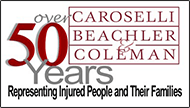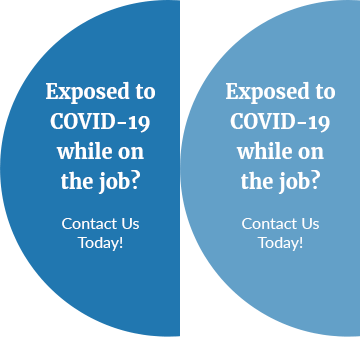The Importance of Demonstrative Evidence in Pittsburgh Car Accident Cases
Car accidents in Pittsburgh can turn your life upside down. One moment, you’re driving along, and the next, you’re dealing with property damage, painful injuries, and a mountain of questions about what comes next. While the physical and emotional toll is immense, there’s also the complex legal process of seeking compensation for your losses. Fortunately, understanding the role of demonstrative evidence can significantly aid in navigating this challenging time.
What is Demonstrative Evidence?
Demonstrative evidence refers to any evidence that is used to illustrate, demonstrate, or recreate a tangible thing or an event. Unlike testimonial evidence (what witnesses say) or documentary evidence (written documents), demonstrative evidence helps a jury or judge see what happened or understand complex information in a more immediate way. It’s about making the abstract concrete and bringing the facts of your car accident case to life in a compelling manner.
This type of evidence is not typically gathered at the scene of the accident itself. Instead, it’s usually created after the fact by legal or medical professionals to help explain key aspects of the collision, the injuries sustained, or the impact on your life. Its purpose is to aid the court’s comprehension, making it an invaluable tool in personal injury litigation.
The Power of Visuals in Car Accident Claims
In any car accident claim, especially one that proceeds to trial, effectively communicating the details of the incident and its consequences is paramount. Human beings are inherently visual learners, and a well-designed visual aid can convey more information and leave a lasting impression far more effectively than words alone.
Imagine trying to explain the precise angles of impact in a complex multi-vehicle collision using only spoken testimony. Now, imagine presenting a detailed 3D animation that visually reconstructs the entire event, showing vehicle speeds, points of impact, and trajectories. The latter provides a level of clarity and persuasion that verbal descriptions often cannot match. This visual power extends to illustrating injuries, medical procedures, and the day-to-day challenges faced by an injured party.
Common Types of Demonstrative Evidence in Car Accident Cases
Demonstrative evidence encompasses a wide variety of forms, each serving a unique purpose in illustrating different facets of a car accident claim.
- Accident Reconstructions: These are perhaps one of the most impactful forms of demonstrative evidence. Accident reconstruction specialists use physics, engineering principles, and data from the accident scene (such as skid marks, vehicle damage, and witness statements) to create visual representations of how the accident occurred. These can range from detailed diagrams and blueprints to sophisticated 3D computer animations that show the vehicles’ movements leading up to, during, and after the collision. They can illustrate speed, impact forces, and lines of sight.
- Maps and Diagrams: Simple yet effective, maps and diagrams can show the accident scene, including road layouts, traffic signals, signage, and the positions of vehicles and pedestrians. These help orient the jury and clarify spatial relationships that are relevant to how the accident unfolded. Overlaying measurements, distances, and points of interest can further enhance their explanatory power.
- Photographs and Videos: While photographs and videos of the actual accident scene and vehicle damage are typically considered documentary evidence, they can be transformed into demonstrative evidence when annotated or arranged strategically. For example, a series of photographs showing progressive damage to a vehicle, or close-ups highlighting specific defects, can become demonstrative when presented with expert testimony explaining their significance. Videos can capture the real-world conditions of the accident site or depict daily struggles an injured person faces.
- Medical Illustrations and Anatomical Models: Explaining complex medical injuries to a layperson jury can be challenging. Medical illustrations, anatomical charts, and 3D models of body parts can visually explain the nature of injuries, the extent of damage to bones or organs, and the specifics of surgical procedures. These tools make abstract medical concepts tangible and help jurors grasp the severity and impact of an injured party’s condition. For instance, a detailed illustration of a herniated disc or a fractured bone can clearly show the impairment caused.
- “Day in the Life” Videos: These powerful videos document the daily struggles and limitations an injured person experiences as a direct result of their injuries. They can show challenges with basic tasks like getting out of bed, dressing, eating, or performing household chores, illustrating the profound impact of the injury on their quality of life. These videos are highly effective in conveying pain, suffering, and the loss of enjoyment of life.
- X-rays, MRIs, and CT Scans (with enhancements): While the original medical imaging is documentary evidence, when a radiologist or medical illustrator highlights specific areas of injury, overlays findings, or uses color coding to emphasize damage, these become demonstrative. This makes it easier for a non-medical audience to interpret complex scans and understand the extent of internal injuries.
- Timelines: A visual timeline can effectively lay out the sequence of events leading to the accident, the medical treatment received, and the progression of recovery (or lack thereof). This helps organize complex information and illustrates the continuity and direct causation between the accident and the subsequent injuries and expenses.
How Demonstrative Evidence Supports Your Car Accident Claim
The strategic use of demonstrative evidence can significantly strengthen a personal injury claim stemming from a car accident in several ways:
- Clarity and Comprehension: Car accidents, especially those involving multiple vehicles or complex maneuvers, can be difficult to describe purely with words. Demonstrative evidence simplifies complex information, making it easier for jurors to visualize the incident, grasp the mechanics of the collision, and understand the nature and severity of injuries. This enhanced clarity can prevent misunderstandings and ensure the jury fully appreciates your case.
- Persuasion and Impact: Visuals have a powerful impact. An engaging animation of an accident or a compelling “day in the life” video can evoke empathy and help jurors connect with the injured party’s experience on a deeper level. This emotional connection, combined with clear factual presentation, can be highly persuasive in convincing a jury of the other driver’s fault and the true extent of your damages.
- Reinforcing Testimony: Demonstrative evidence can be used in conjunction with witness testimony or expert opinions to reinforce key points. An accident reconstruction expert’s testimony becomes far more impactful when accompanied by a visual representation of their findings. Similarly, a doctor’s explanation of an injury is more effectively absorbed when presented with a detailed medical illustration.
- Establishing Causation: One of the main hurdles in personal injury cases is proving that your injuries were directly caused by the accident. Demonstrative evidence can effectively link the forces of the collision to specific injuries, especially in cases involving hidden injuries or those that manifest days later. For example, an animation showing the forces exerted on a body during a rear-end collision can help explain whiplash or a concussion.
- Maximizing Compensation: By clearly and compellingly illustrating fault and damages, demonstrative evidence can lead to a more favorable outcome, whether through a settlement or a jury verdict. When insurance adjusters or opposing counsel see the strength of your visual evidence, they may be more inclined to offer a fair settlement rather than risk a trial where such evidence could sway a jury.
Admissibility and Preparation of Demonstrative Evidence
While incredibly powerful, demonstrative evidence must meet certain legal standards to be admissible in court. It must be relevant to the case, accurately represent what it purports to show, and not be unfairly prejudicial or misleading.
Preparing effective demonstrative evidence requires a blend of legal strategy, scientific accuracy, and artistic skill. It often involves collaboration between your legal team and various experts:
- Accident Reconstructionists: These professionals can analyze physical evidence and data to create accurate models or animations of the accident.
- Medical Experts: Doctors, radiologists, and physical therapists can provide insights into injuries and help create or interpret medical illustrations.
- Forensic Illustrators/Animators: These specialists are skilled in translating complex information into clear, compelling visual aids.
- Vocational Experts: They can help demonstrate the impact of injuries on an injured party’s ability to work and earn a living.
The process of developing demonstrative evidence begins early in the legal process, often as soon as the full extent of injuries and the circumstances of the accident are known. Each piece of evidence is carefully crafted to ensure it tells a coherent and persuasive story that aligns with the overall narrative of your case.
Looking for Legal Support After a Crash? Let’s Talk—Call Caroselli, Beachler & Coleman
If you or someone you love has been injured in a car accident in Pittsburgh, we’re here to help you decide your next steps. Contact us online or call us at 866-565-4949 to talk about your case with our attorneys.






